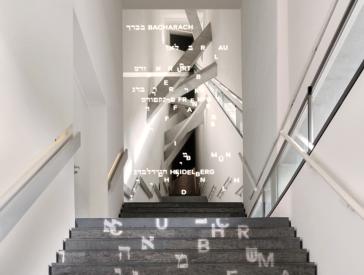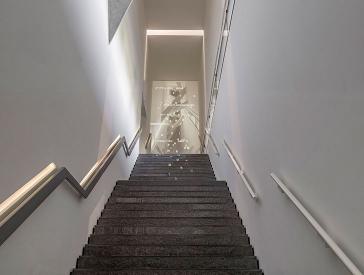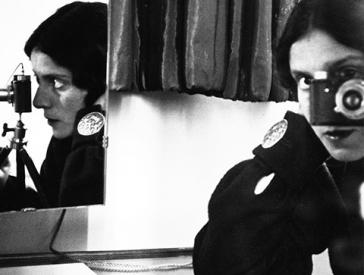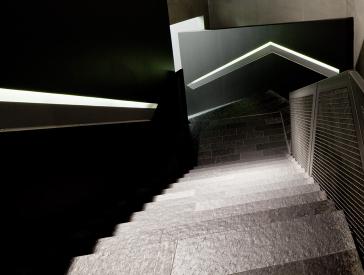Russians Jews Germans
Photographs by Michael Kerstgens from 1992 to the Present
After the fall of the Iron Curtain in 1989–90, nearly a quarter of a million Jewish immigrants – known as “quota refugees” – came to Germany from the former Soviet Union. This wave of immigration brought about lasting changes in the German-Jewish community.
Michael Kerstgens is one of the few photographers to have documented the immigration of Russian-speaking Jews to Germany from the former Soviet Union intensively over a long period of time. He began his long-term documentation of Jewish life in Germany in 1992. Gradually, the immigration of Jews from the former Soviet Union became the central theme of his photographs.
Past exhibition
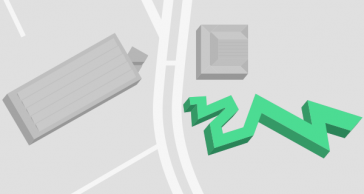
Where
Libeskind Building, ground level, Eric F. Ross Gallery
Lindenstraße 9–14, 10969 Berlin
In his work, Michael Kerstgens focuses on the social and religious challenges facing Jewish immigrants to Germany as well as on the situation of long-established German Jews. He records religious celebrations and social events within the Jewish community, everyday scenes from transitional homes, and individual families’ private moments.
The photographs speak to farewells and new beginnings, arrival and lingering, and the search for belonging and religious tradition. They can be regarded an initial visual reflection on an unconcluded, open-ended process.
Background: The Quota Refugee Act
As part of the unification process, the Federal Republic of Germany agreed to uphold the promise made by the last East German government to admit Jews from what was then still the Soviet Union. On 9 January 1991, in keeping with the wishes of the federal government and the Central Council of Jews in Germany, the premiers of all German states resolved to admit Russian-Jewish emigrants to Germany on the basis of the Quota Refugee Act. Anyone identified as Jewish by Russian documents was now free to apply for a permanent residence permit, along with the non-Jewish members of their families.
Unlike the ethnic German repatriates from the former Soviet Union, the “quota refugees” were not granted German citizenship automatically, but they were permitted to apply for it after a certain amount of time had passed. They were eligible for work permits, social security benefits, and integration assistance such as a free language course and help in the search for housing.
When the Immigration Act of 1 January 2005 went into effect, the Quota Refugee Act lapsed. In 2007, the further admittance of Jewish immigrants from the former Soviet Union was resolved, albeit with stricter requirements than before.
Selected Photos from the Exhibition

This photo was taken during a gathering that the central welfare office of the Jews in Germany provided for Jewish-Russian immigrants. Such gatherings and seminars were meant to strengthen the Jewish identity of the immigrants and ease their integration into the Jewish communities. Michael Kerstgens, Seniors' retreat at the Kurhotel Eden-Park in Bad Kissingen, Bad Kissingen 2001; Jewish Museum Berlin

Many Jewish-Russian immigrants were initially housed in temporary accommodations after their arrival in Germany. They stayed there up to a year or longer. Life in these transitional residences was frequently characterized by isolation from the majority of society, language problems, tensions with other refugees in the facilities, and uncertainty about one's own future. Michael Kerstgens, Communal kitchen in the transitional home Weiden, Upper Palatinate, 2001; Jewish Museum Berlin

This Purim celebration by the Jewish community happened in the communal hall of a protestant church, because the Jewish community did not have a suitable space to celebrate with its many new members. Michael Kerstgens, The Jewish community Purim ball, Weiden, Upper Palatinate, 2001; Jewish Museum Berlin

This photo shows how the Jewish-Russian families were made familiar with passover and its associated traditions and rules during a family gathering of the central welfare office of the Jews in Germany. Michael Kerstgens, Family retreat on the subject of Passover in Bad Sobernheim, Bad Sobernheim 2001; Jewish Museum Berlin

For the Jewish community, the Hanukkah Ball was the largest social event, and many recently arrived Jewish-Russian immigrants are there for the first time. Michael Kerstgens, Jewish community Hanukkah ball, Berlin 1992; Jewish Museum Berlin

Mikhail and Galina Troitschanski emigrated in 1990 from Moscow to Berlin. They did not have any religious motives for their departure. Above all, they hoped for better educational opportunities for their children. In Berlin, the family began to devote themselves to Judaism and their own family history. So arose the question of whether Germany was the right place to stay. Since then, the Troychanskiy family, as they have written it since their arrival in Canada, lives in a Jewish suburb of Toronto and is part of the conservative Chabad-Lubawitsch movement. Michael Kerstgens, The Troychanskiy family - as their name has been spelled since they arrived in Canada - at the Shabbat meal, Toronto, Canada 2011; Jewish Museum Berlin
Expressly for the 2012 exhibit, the photographer shot new portraits of some of his subjects from the 1990s, documenting the immigrants' changed circumstances and often astonishing progress.
Photographer Michael Kerstgens talks with Cilly Kugelmann, program director of the Jewish Museums Berlin, at the exhibition opening on 19 April 2012 in Berlin (in German)
Encompassing 162 shots in black and white, the series has belonged to our museums Photographic Collection since early 2011. Nearly half of the photographs were on view in the exhibition as ink-jet prints.
Acknowledgments
We would especially like to thank Michael Kerstgens and all people portrayed in his work.
Theresia Ziehe, curator for photography at the Jewish Museum Berlin, at the exhibition opening on 19 April 2012 in Berlin (in German)
Exhibition Credits
Curators
Sarah Elena Link (research volunteer)
Theresia Ziehe
Exhibition Design
Heinrich Siebert (design, structure, framing, and hanging)
Studio Good (textual design)
Translations
Anna Povejsilova
Judith Rosenthal
The Michael Kerstgens photographs were in parallel with the exhibit Berlin Transit. Jewish Migrants from Eastern Europe in the 1920s. Thus the exhibition brought the historical perspective on migration right up to the present day and traced the question of how Jewish life in Germany has changed with the immigration of Russian-speaking Jews over the past twenty years.
Exhibition Information at a Glance
- When 20 Apr to 26 Aug 2012
- Where Libeskind Building, ground level, Eric F. Ross Gallery
Lindenstraße 9-14, 10969 Berlin
See Location on Map
Further Locations of the Exhibition
| Darmstadt | 4 Nov to 2 Dec 2012 in the Designhaus Mathildenhöhe |
|---|---|
| Oberhausen | 24 Feb to 21 Apr 2013 in the Ludwig Gallery of Schloss Oberhausen |
| Budapest | 5 to 18 Mar 2013 in the Hungarian Ministry of Foreign Affairs and 2 May to 23 Jun 2013 in the Historical Museum in Burgpalast |
| Düsseldorf | 9 Mar to 30 Apr 2015 in the Gerhart-Hauptmann-Haus Foundation |
| Münster | 5 to 29 Apr 2016 as part of the 11. Jüdischen Kulturtage in the VHS-Forum |
